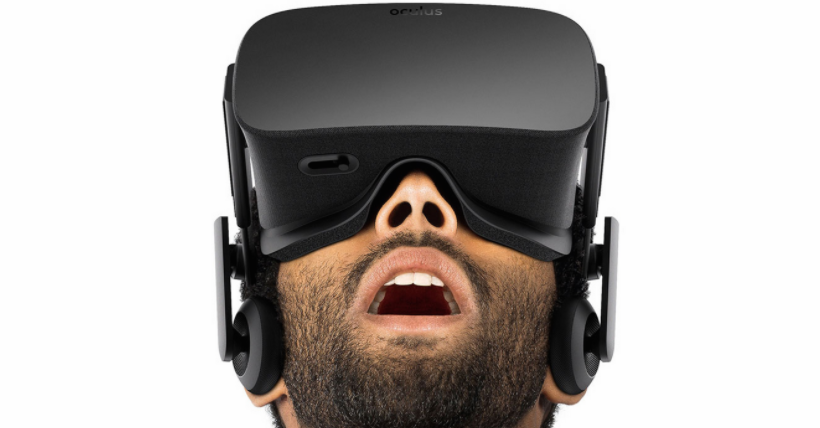When Your Brain Nose Something Is Missing
Keeping your neck straight, look down, then left, then right, and then straight ahead. Did you see anything? You should have. Although you probably didn’t think much of it, your nose should have been visible (even if just peripherally in the last case) throughout that mini experiment. Unless you’re Voldemort, your nose is always there — even if we don’t always notice it.
But what would happen if we couldn’t see our nose (even if we’d ignore it anyway)? The answer: we may start to feel sick — or at least, we might if we’re hanging out in a virtual reality experience.
Let’s start with the below. It’s a PR photo from Oculus Rift, a leading (and Facebook-owned) company in the virtual reality space. The guy pictured is wearing a Rift, and it’s pretty clear from the image most of the nose sits outside the viewer, and therefore, outside of his view.

In other words, if you’re using an Oculus Rift, you can’t see your nose. (That’s true for other VR headsets, too.) It’s not because your brain mostly ignores it though; it’s because the nose isn’t actually in your field of view. And, according to researchers at Purdue University, that’s a big problem.
If you’ve never used a virtual reality device — Oculus Rift or Google Cardboard, for example — they’re pretty neat, but they also tend to cause something akin to motion sickness. But different factors can reduce the effect. And, per Purdue’s news service, “anecdotal evidence has suggested simulator sickness is less intense when games contain fixed visual reference objects – such as a racecar’s dashboard or an airplane’s cockpit – located within the user’s field of view.”
In 2015, a Purdue professor named David Whittinghill surmised that our nose acts as a “fixed visual reference object,” albeit one that our conscious minds mostly edits out. Could adding a nose to the VR experience, he wondered, reduce simulator sickness? To find out, he and his team created what they called a “nasum virtualis” — a virtual nose that could be projected inside a VR viewer. And then they got to testing. Ars Technica summarized the findings:
The Purdue study divided 43 undergraduate volunteers into two groups. The first group went through two unmodified virtual reality demos on Oculus Rift development kits, while the other went through the same demos with the virtual nose placed where a real nose would appear in front of the environmental view. The “nasum virtualis” group lasted an average of 94.2 seconds longer in a simulated walk-around on a Tuscan villa before feeling sick and lasted 2.2 seconds longer on average in a roller coaster simulation.
Whittinghill, convinced of the promise of the discovery, decided to patent the “nasum virtualis” and founded a startup to market the IP. Whether the business will work out is to be seen, but it seems to pass the smell test.
Bonus fact: The vertical groove between your nose and your mouth has a name — it’s called a “philtrum.” And: it doesn’t do anything, at least not for us humans. The purpose, per Wikipedia, is to bring moisture from the mouth to the nose, which for other species, is important, as “a wet nose pad traps odor particles better than a dry one, thus it greatly enhances the function of the olfactory system. ”
From the Archives: The Nose Knows: How Disney’s theme park turns smells into a core part of the experience — and the marketing.
Related: An actual-reality viewer with an artificial nose. It’s cheap, durable, and looks silly to wear in public. Prefer virtual reality? Try a relatively cheap VR headset (using your smartphone) — $20, but 3.9 stars on average.
